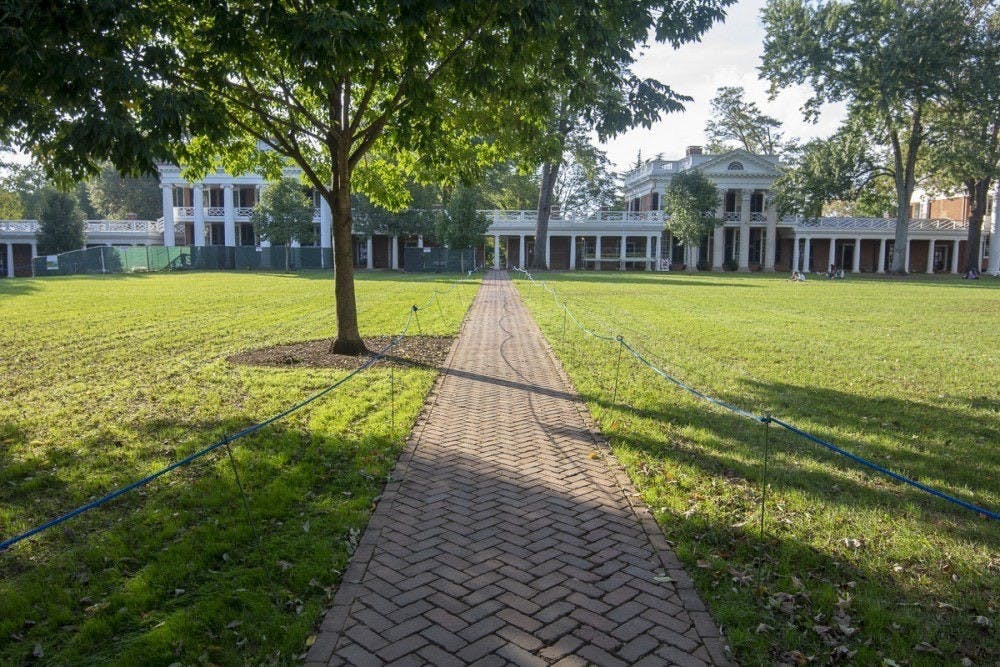The University administration has recently announced several construction projects that will change the landscape of Grounds. Thomas Jefferson’s Academical Village has inspired generations of students, faculty, staff and visitors. Its forms — grounded in Federalism, Neoclassicism and Neo-Palladianism — embody the democratic mission of the University as a public institution. As the University community accommodates arising facility needs through additions to the architectural landscape of Grounds, it must maintain the forms of Jeffersonian architecture to not only preserve visual consistency but exemplify the spirit of the University.
While architectural preferences remain inherently subjective, the case in favor of the continued construction of Jeffersonian styles presents a compelling logic even to those who prefer contemporary forms. The argument for maintaining a traditional architectural style on Grounds has two parts — philosophical and practical.
On a philosophical level, Jeffersonian architecture embodies the transition of the University’s purpose and role in Virginia. Constructed in the Antebellum South, the Academical Village hides a complex history beneath its polished facades.The University relied on slave labor during and after construction of the Academical Village, and the iconic serpentine walls were designed to hide enslaved laborers at work from sight. The columns, pediments and entablatures of the celebrated pavilions and Rotunda not only bear resemblances to ancient Greek and Roman precedents, but also to plantations.
However, the University of 1819 differs from the University of 2020. While issues such as rising tuition costs continue to present barriers to access and deserve greater attention, the University has made significant strides in fulfilling its democratic purpose as a public institution. The construction of the Memorial to Enslaved Laborers represents efforts to acknowledge the University’s past and corrects former attitudes that glossed over its more shameful aspects.
The stories of the United States and the University are intertwined. The democratic and republican principles upon which our nation was founded drew inspiration from ancient Greece and Rome — as do the classically-inspired buildings that define the University landscape. The application of those visions were imperfect at their inception and continue to be refined. Instead of glorifying a society based on the plantation economy, the Academical Village now embodies the role of the University in protecting democratic and republican principles as well as the democratization of knowledge.
In the year I spent studying at the School of Architecture, I grew frustrated by my professors’ fixation on embracing avant-gardism for no other reason than creating something different. The origins of this movement lack the same logic as previous artistic developments in several respects. The progression of Western art and architecture since the beginning of recorded history has largely focused on advancing the effectiveness of art to communicate ideas. Non-naturalistic forms are featured prominently in Medieval Art, but artists from the Middle Ages used such styles to communicate the other-worldly nature of religious figures. As art responded to the invention of photography, Impressionists moved away from realism and towards efforts to capture light in its changing qualities.
Avant-gardism, on the other hand, prioritizes breaking from convention to shock viewers and do something different rather than do something better. Though not all avant-garde movements have failed to advance the communicative nature of art, many — in their philosophical origins at least — lack the integrity of previous movements.
However, those studying and teaching at colleges and universities must remember that abstract theories and ideals hold little relevance to anyone unless they have practical applications. Ignoring even the philosophical argument in favor of maintaining Jeffersonian architecture, the practical nature of preserving classical forms on Grounds presents an even stronger case.
There is a reason why the University markets itself using pictures of the Rotunda and not the Chemistry Building or Fitzhugh House. The classical forms that Jefferson drew from have looked good for thousands of years. Traditional architecture is generally more well-liked than contemporary architecture — by a ratio of 77 percent compared 23 percent demonstrated in one study. Architectural experiments from the late twentieth century continue to hinder Grounds from reaching its full potential in terms of beauty. Clemons Library and the dorms at Lambeth look like they belong in Stalingrad, not within walking distance to the renowned UNESCO World Heritage Site that is the Academical Village.
One 1987 study found that architecture students preferred contemporary styles that differed sharply with the general student body’s preference of traditional forms at a British university. In my experience studying architecture, the unqualified embrace of the avant-garde by academics at the University ignores the simple practical beauty and consistency of the foundation Jefferson left us. The University community should look for every opportunity to make Grounds as beautiful as possible and reject the philosophically flawed and impractical nature of contemporary architecture.
Tom Ferguson is an Opinion Columnist for The Cavalier Daily. He can be reached at t.ferguson@cavalierdaily.com.
The opinions expressed in this column are not necessarily those of The Cavalier Daily. Columns represent the views of the authors alone.







